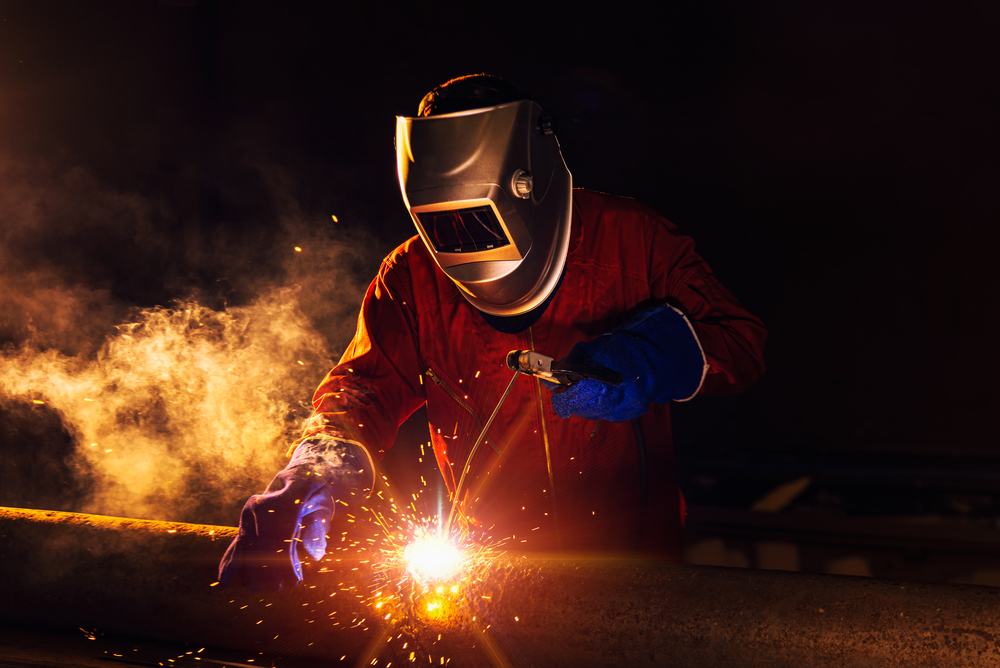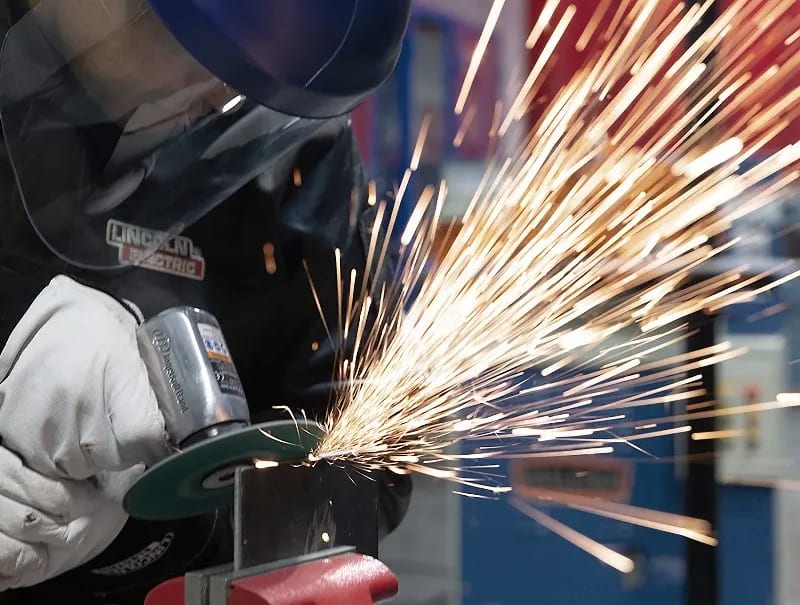Quick solutions to weld misalignment in Montana Mobile Welding and Repair Fabrication
Common Welding Repair Issues and Exactly How to Address Them Effectively
Welding repair work often experience a variety of concerns that can endanger the honesty of the last item. Common issues consist of inadequate infiltration, porosity, and misalignment, to name a few. Each problem provides unique difficulties that call for details techniques for resolution. Comprehending these problems is essential for welders intending to improve their abilities and outcomes. This discussion will certainly explore these typical welding repair service problems and reliable techniques to resolve them.
Inadequate Infiltration
Insufficient infiltration occurs when the weld steel fails to totally fuse with the base product, causing weak joints and possible structural failures. This problem often originates from not enough warmth input, inaccurate electrode angle, or improper welding rate. Welders might come across poor infiltration because of a mistake of the necessary specifications for a details product density or kind. In addition, contamination on the base product's surface area can hinder efficient bonding, exacerbating the trouble. To resolve insufficient infiltration, welders ought to assure proper setups on their tools and preserve a tidy work surface. Regular evaluation of welds is suggested to determine any kind of deficiencies early, permitting for timely adjustments and the prevention of compromised architectural integrity in welded assemblies.
Porosity
Porosity is a typical flaw in bonded joints that materializes as little gas bubbles caught within the weld steel. This problem can compromise the integrity of the weld, leading to decreased strength and potential failure under tension. Montana Mobile Welding and Repair Belgrade. Porosity commonly occurs from contamination, moisture, or incorrect welding techniques, which allow gases to escape right into the molten weld swimming pool. To attend to porosity, welders ought to ensure appropriate surface prep work, maintain a clean workplace, and utilize ideal welding specifications. Additionally, picking the ideal filler material and securing gas can reduce gas entrapment. Regular assessment and testing of welds can help recognize porosity early, guaranteeing prompt rehabilitative actions are taken, thereby maintaining the quality and dependability of the welded framework
Imbalance
Misalignment in welding can emerge from different variables, consisting of improper arrangement and thermal growth. Understanding the source is crucial for effective resolution. A number of adjustment techniques are readily available to realign parts and assure architectural honesty.
Reasons of Misalignment
Welding misalignment often originates from a selection of underlying concerns that can endanger structural integrity. One primary cause is incorrect fit-up of components before welding, which can bring about voids and uneven surface areas. Variants in thermal development during the welding process can likewise result in distortion, particularly if the products being signed up with have various coefficients of growth. In addition, inadequate clamping and fixturing might fail to hold elements safely in place, bring about motion during welding. Inadequately conserved tools, consisting of welding devices and tools, may present inconsistencies in the weld grain, further adding to misalignment. Lastly, driver error, coming from inadequate training or experience, can likewise play a substantial function in producing misaligned welds.
Improvement Methods Available
Dealing with misalignment properly needs a combination of rehabilitative strategies customized to the details problems available. One common approach is the usage of jigs or fixtures to hold components in the appropriate placement during welding, guaranteeing constant positioning. Additionally, preheating the products can help decrease distortion and boost fit-up. For significant imbalance, mechanical realignment methods, such as using hydraulic jacks or clamps, can be utilized to fix the position before welding. Post-weld heat treatment might likewise be necessary to soothe stresses caused by imbalance. Mindful assessment and change throughout the arrangement stage can stop imbalance issues from ending up being substantial issues, advertising a smoother welding process and boosting total architectural integrity.
Distortion
Distortion is a typical obstacle in welding that can occur from numerous factors, consisting of irregular cooling and heating. Understanding the root causes of distortion is vital for carrying out reliable prevention methods. Addressing this concern not only boosts structural stability yet likewise improves the total top quality of the weld.
Reasons for Distortion
When subjected to the intense warm of welding, products commonly undertake adjustments that can lead to distortion. This phenomenon mainly emerges from thermal growth and tightening during the welding procedure. As the weld area heats up, the product expands; upon cooling, it gets, which can develop interior stresses. Furthermore, uneven heating throughout a workpiece can intensify these stress and anxieties, resulting in warping or bending. The sort of product likewise plays a significant duty; steels with differing thermal conductivity and coefficients of development may react in a different way, resulting in unpredictable distortions. Poor joint layout and poor fixturing can add to misalignment throughout welding, increasing the likelihood of distortion. Understanding these causes is essential for reliable welding repair and avoidance techniques.
Prevention Techniques
Reliable avoidance techniques for distortion throughout welding concentrate on managing warmth input and guaranteeing proper joint style. Maintaining a regular warm input helps to reduce thermal expansion and tightening, which can bring about distortion. Making use of methods such as pre-heating the work surface can additionally lower the temperature slope, promoting uniform heating. In addition, picking appropriate joint designs, such as T-joints or lap joints, can boost stability and reduce stress concentrations. Applying correct fixturing to protect the work surfaces in position better help in maintaining alignment throughout the welding procedure. Staggered welding series can distribute heat more uniformly, protecting against localized distortion. By applying these approaches, welders can considerably reduce the likelihood of distortion and improve the general high quality of their welds.
Breaking
Breaking is an usual problem encountered in welding fixings, often arising from numerous aspects such as inappropriate cooling prices, material selection, or inadequate joint prep work. The event of cracks can significantly compromise the integrity of the weld, resulting in possible failings during operation. To address this problem, welders need to first analyze the source, guaranteeing that materials work and suitably selected for the certain application. Furthermore, regulating the air conditioning rate during the welding process is necessary; rapid cooling can induce stress and anxiety and result in fracturing. Correct joint layout and preparation likewise add to minimizing the threat. Applying these methods can enhance weld top quality and sturdiness, ultimately decreasing the chance of splitting in ended up weldments.

Incomplete Combination
A substantial concern in welding repairs is insufficient fusion, which occurs when the weld steel does not appropriately bond with the base material or previous weld passes - Montana Mobile Welding and Repair Belgrade Fabrication. This issue can bring about weak points in the joint, possibly endangering the honesty of the welded structure. Elements adding to incomplete combination include insufficient warmth input, inappropriate welding method, and contamination of the surface areas being joined. To resolve this issue efficiently, welders must assure correct pre-weld cleansing and surface area preparation, as well as adjust their welding parameters to achieve adequate infiltration click here and blend. Routine inspection during the welding procedure can additionally help recognize incomplete combination early, enabling timely restorative steps to improve the overall quality of the weld
Overheating
While welding repair services can enhance architectural integrity, overheating presents a substantial obstacle that can result in product degradation. Too much warm during welding can change the mechanical homes of steels, causing lowered stamina, enhanced brittleness, and bending. This phenomenon is specifically crucial in high-stress applications where architectural dependability is vital. Determining overheating can include aesthetic inspections for staining or distortion, along with monitoring temperature level throughout the welding process. To reduce the threats connected with getting too hot, welders must use proper techniques, such as managing heat input, adjusting travel rate, and utilizing ideal filler materials. Furthermore, executing pre- and post-weld warm treatments can aid recover product homes and boost the total quality of the repair work, guaranteeing lasting efficiency and safety and security.
Regularly Asked Inquiries
What Are the Common Indications of a Welding Defect?

Just How Can I Check My Welds for High quality?
To examine welds for high quality, one can make use of visual examinations, ultrasonic screening, and radiographic techniques. Each technique ensures structural stability, identifies defects, and validates adherence to specified requirements, ultimately improving the dependability of the welded joints.
What Security Precautions Should I Take While Welding?
When welding, one need to prioritize safety and security by wearing ideal personal safety equipment, making certain correct air flow, protecting flammable materials away, maintaining a clean office, and recognizing surroundings to avoid injuries and mishaps.
Can I Repair a Weld Without Remodeling the Entire Joint?
Repairing a weld without renovating the whole joint is possible, depending on the damage (Montana Mobile Welding and Repair Belgrade Fabrication). Strategies such as grinding, adding filler material, or utilizing a welding procedure can efficiently address details defects while preserving the bordering framework
What Equipment Are Essential for Effective Welding Fixes?
Vital devices for effective welding repair work include a welding device, cable brush, mill, protective equipment, clamps, and filler products. Each tool plays a crucial duty in making sure top quality and safety during the repair process. Porosity generally develops from contamination, dampness, or inappropriate welding methods, which enable gases to leave into the molten weld swimming pool. Badly kept devices, including welding devices and tools, might present variances in the weld grain, further contributing to imbalance. When subjected to the intense warm of welding, products usually undertake changes that can lead to distortion. Breaking is a typical issue run into in welding repair work, usually resulting from numerous variables such as improper air conditioning prices, material selection, or poor joint prep work. A considerable issue in welding repairs is incomplete fusion, which takes place when the weld metal does not effectively bond with the base product or previous weld passes.